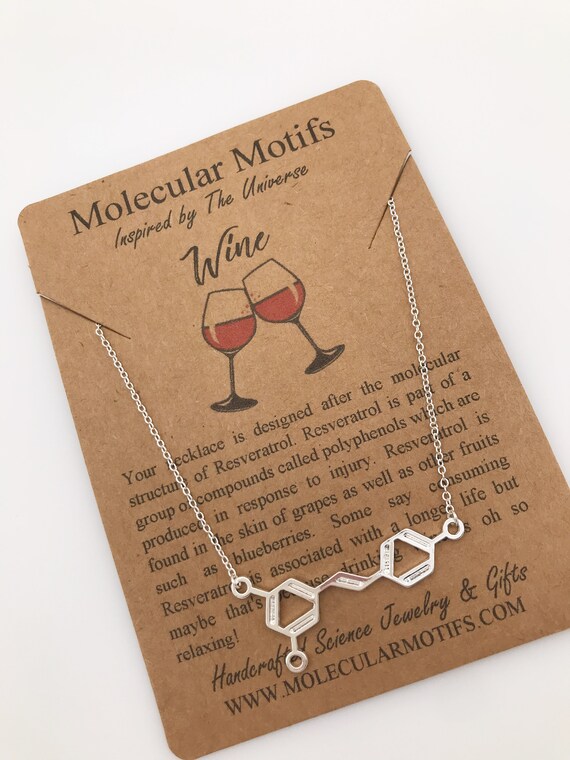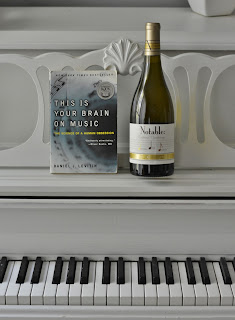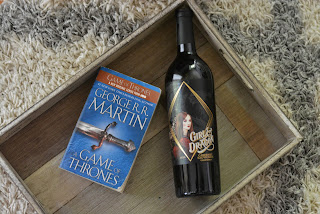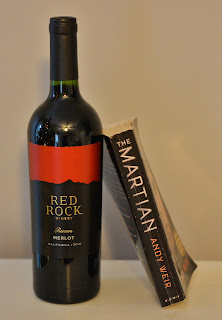This is Your Brain on Music & Notable California Chardonnay
PageFiftyNine has been deep in the trenches lately, with suspense and death and dialogues on society and saving the world. This week, we take a breather with some good old Science. Luckily for all involved, it's the science of music, which is basically the coolest topic you didn't know you wanted to know more about.
Also, we continue to drink wine.
The Pairing
This is Your Brain on Music by Daniel J. Levitin and Notable California Chardonnay
This week I want to talk about the wine first. Notable wines only has two out so far that I can find: California Chardonnay, which is oaky and buttery, and Australia Chardonnay, which is cool and crisp. Their division by style and taste, denoted clearly on the front of the bottle by a little slider scale, make them seem much more scientific in their approach than artful. Don't be totally fooled, though: these wines are delicious and clearly made with love.
For the pairing with This is Your Brain on Music, I went with the California Chardonnay purely because my personal music tastes are more on the buttery side than the crisp.
In the post about A Brief History in Time I mentioned that for dense, scientific books you need a light, no-nonsense wine. This pairing is no different, even though TIYBOM is much less theory of relativity and much more Pink Floyd. Even so, I knew we'd need something smooth and easy- something like a Chardonnay.
I read this book many years ago when I was in college and could not get enough of learning. I wanted to understand the whole entire world around me, from exercise to psychology to, you guessed it, music. I was not able to absorb everything that Dan Levitin had to say, but loved his passion for finding reason behind something we all love so much but never really think about. And, it turns out, a lot of very interesting people share his curiosity, like Francis Crick (of Watson and Crick and the structure of DNA) and Paul Simon (of Paul Simon). One of my favorite things about this book is how often he references bands or people or songs that you're familiar with so you can personally relate and apply whatever musical element is being discussed. It also helps balance out all the references of mathematicians and neuroscientists that Levitin clearly idolizes but are completely foreign to the average music lover.
Have you ever wondered why you can't get jingles out of your head, or why some music sounds creepy, or why oaky is even considered a good thing in a wine? Look no further, the answers are here.
---
Love "the science of" stuff as much as I do? Check out these adorable infographics: a Resveratrol necklace and a genetic replication wine glass in honor of our very own Francis Crick.


Also, we continue to drink wine.
The Pairing
This is Your Brain on Music by Daniel J. Levitin and Notable California Chardonnay
This week I want to talk about the wine first. Notable wines only has two out so far that I can find: California Chardonnay, which is oaky and buttery, and Australia Chardonnay, which is cool and crisp. Their division by style and taste, denoted clearly on the front of the bottle by a little slider scale, make them seem much more scientific in their approach than artful. Don't be totally fooled, though: these wines are delicious and clearly made with love.
For the pairing with This is Your Brain on Music, I went with the California Chardonnay purely because my personal music tastes are more on the buttery side than the crisp.
In the post about A Brief History in Time I mentioned that for dense, scientific books you need a light, no-nonsense wine. This pairing is no different, even though TIYBOM is much less theory of relativity and much more Pink Floyd. Even so, I knew we'd need something smooth and easy- something like a Chardonnay.
I read this book many years ago when I was in college and could not get enough of learning. I wanted to understand the whole entire world around me, from exercise to psychology to, you guessed it, music. I was not able to absorb everything that Dan Levitin had to say, but loved his passion for finding reason behind something we all love so much but never really think about. And, it turns out, a lot of very interesting people share his curiosity, like Francis Crick (of Watson and Crick and the structure of DNA) and Paul Simon (of Paul Simon). One of my favorite things about this book is how often he references bands or people or songs that you're familiar with so you can personally relate and apply whatever musical element is being discussed. It also helps balance out all the references of mathematicians and neuroscientists that Levitin clearly idolizes but are completely foreign to the average music lover.
Have you ever wondered why you can't get jingles out of your head, or why some music sounds creepy, or why oaky is even considered a good thing in a wine? Look no further, the answers are here.
---
Love "the science of" stuff as much as I do? Check out these adorable infographics: a Resveratrol necklace and a genetic replication wine glass in honor of our very own Francis Crick.








Comments
Post a Comment